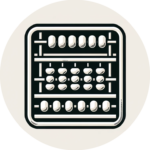HAMANN AUTOMAT, 1925
Inventor
Christel HAMANN
Invention date
1925
Manufacturing date:
Unkown
Manufacturing location
Germany
Manufacturer
Deutsche Telefon Werke
Dimensions
L 31 W 26 H 15
Reference Number
099

History and Functionality
The German Christel HAMANN (1870-1948) was an engineer. In 1896 he founded an institute for the manufacture of mathematical and surveying instruments. He invented several transfer mechanisms and manufactured machines under his name.
This transfer mechanism is called the variable pawl transfer. The rotation of the wheel of the transfer mechanism is proportional to the angle defined by the number set in the setting mechanism.
Jacob LEUPOLD (Germany 1674-1727) designed this principle in 1727.
In 1925 the machines were produced by Deutsche Telefon Werke.
For his inventions in the field of calculating machines, Christel HAMANN was awarded a gold medal at the Universal Exhibition in Paris in 1900.
The machine which is exhibited uses electricity.
About The Inventor
Christel Hamann was a prominent German inventor and engineer, known for his significant contributions to the development of mechanical calculators, including the “Hamann Automat” in 1925. Born in 1870 in Hammelwarden, Germany, Hamann was inspired by his father’s friends to study mechanics and constructions of calculating machines.
In 1896, Hamann established his own institute in Berlin—the Mathematical-Mechanical Institute in Berlin-Friedenau. Initially, he focused on the construction of geodetic and mathematical instruments, receiving a gold medal at the 1900 World Exhibition in Paris for his work. However, in the early 1900s, Hamann decided to concentrate on developing calculating machines. He started developing calculators in 1898, initially experimenting with the construction of Selling and later adopting the stepped drum of Leibniz to develop the “Gauss” and “Berolina” calculators. In 1903, he designed a proportional system of levers, later used in the “Mercedes Euklid” calculator.
Hamann’s talent for invention was further demonstrated in 1909 when he constructed a differential engine used for calculating logarithmic-trigonometrical tables. This machine was developed to assist astronomers Julius Bauschinger and Jean Peters from the Royal Prussian Academy of Sciences in Berlin, who needed an automatic calculator for their work.
After World War I, Hamann worked for Berliner Deutschen Telephonwerke- und Kabelindustrie AG in Berlin, where he developed the “Hamann Manus” calculator in 1925. This machine was equipped with a new type of calculating mechanism called Schaltklinke (switching-latch-wheel), which allowed automatic division for the first time. Hamann continued to innovate, developing electric drive models like the “Hamann Automat V” and the “Hamann Selecta”. In 1933, he was appointed as an honorary doctor of the Technical University of Berlin (TH Berlin).
Christel Hamann passed away on June 9, 1948, in Berlin, leaving behind a legacy of significant advancements in the field of mechanical calculators

